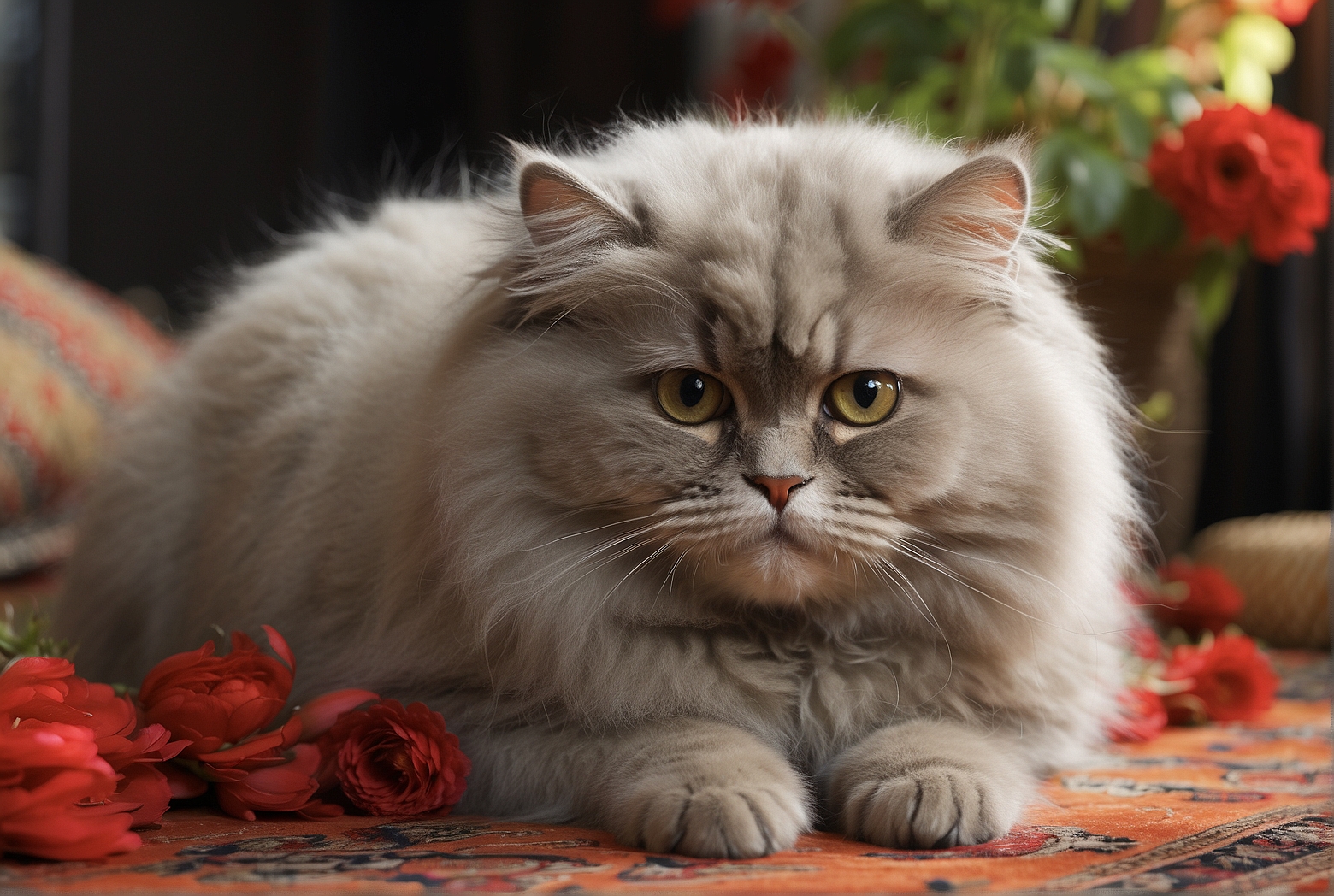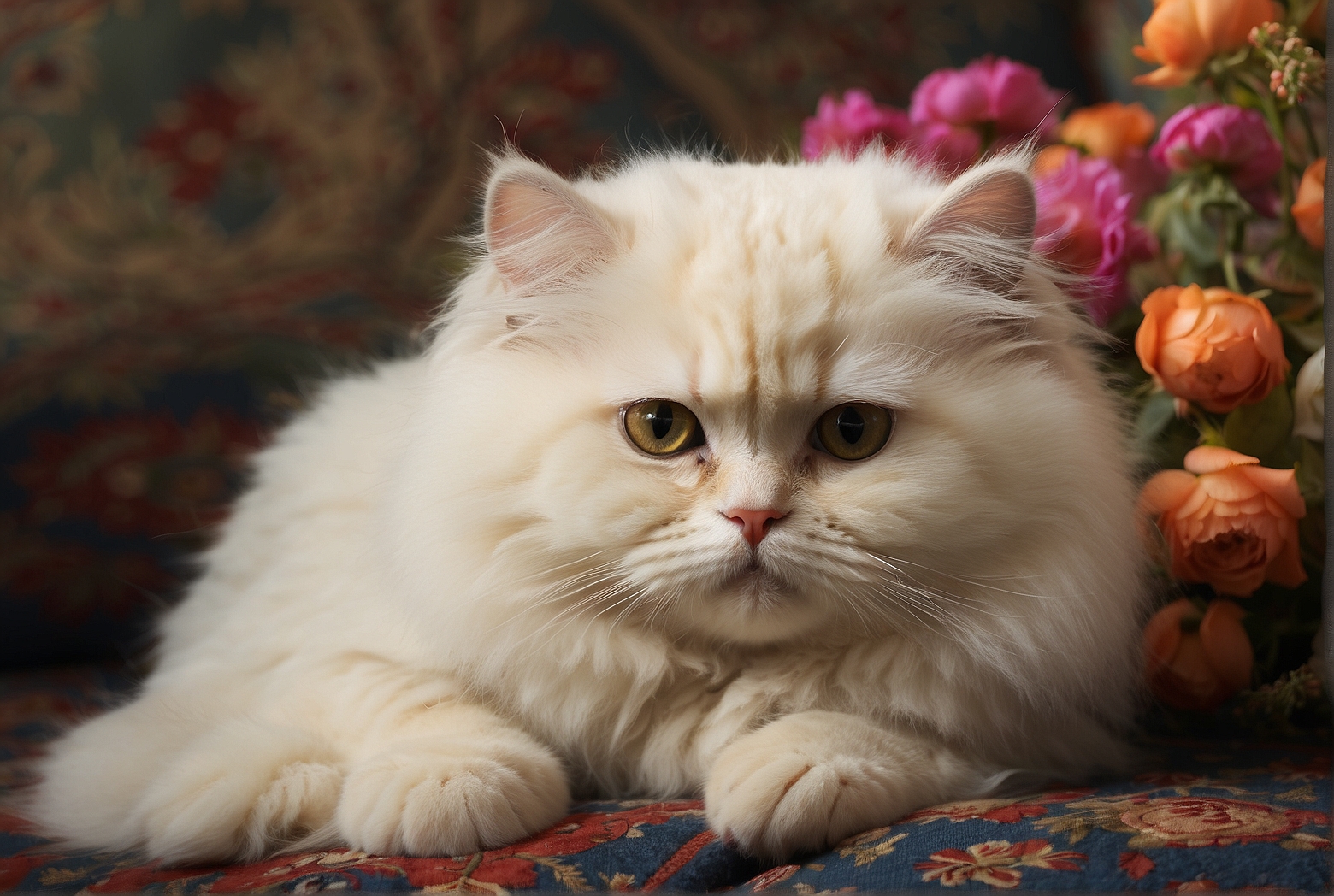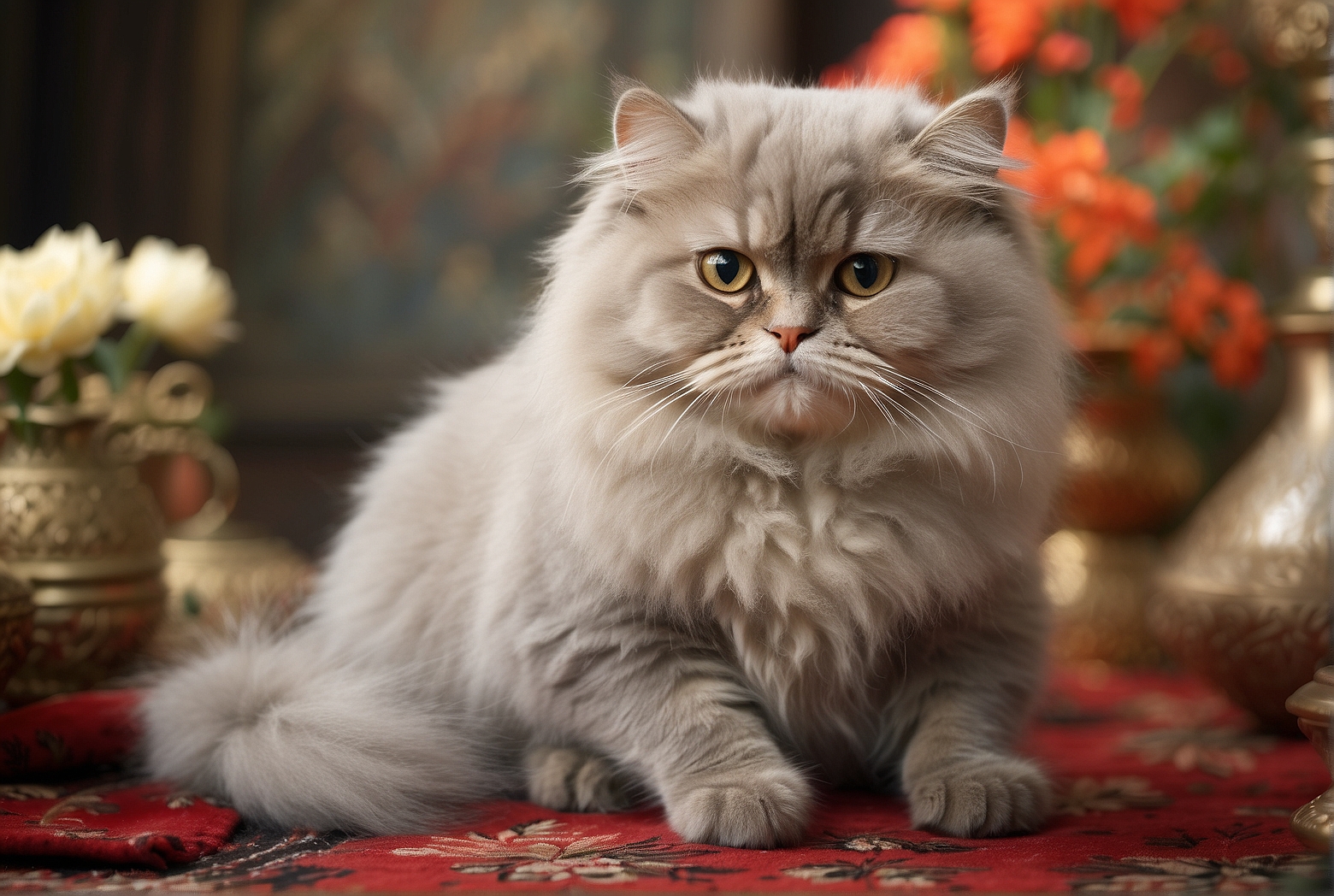Curiosity piqued by the majestic Persian breed of cats? Wondering when these fluff balls reach their full potential? Fear not, as this article serves as your trusty guide in answering the ever-elusive question of “When Are Persians Fully Grown?” Discover the fascinating stages of development that these feline companions go through, shedding light on when you can expect your adorable Persian to reach their mature and magnificent form. Prepare to be captivated as we take you on a delightful journey through the world of Persian cats!
Physical Development
Size
Persian cats are known for their luxurious, fluffy coat and their stocky body. When fully grown, Persians can vary in size, but the average height of an adult Persian is around 10-15 inches at the shoulder. Their body length can range from 18-22 inches, making them a medium-sized breed. It’s important to note that individual Persians may vary in size based on genetics and other factors, so it’s always best to assess the specific cat’s size rather than relying solely on averages.
Weight
Like their size, the weight of Persian cats can also vary. On average, adult Persians typically weigh between 7-12 pounds. However, some Persians may weigh more or less depending on their individual genetics, lifestyle, and overall health. It’s essential to monitor your Persian’s weight and consult with a veterinarian to ensure your cat maintains a healthy weight to prevent any potential health issues that can arise from either being overweight or underweight.
Coat
One of the defining features of Persian cats is their long, luxurious coat. At birth, Persians have a short, soft coat that gradually grows longer and thicker as they develop. It’s important to note that Persian kittens may not have their final coat until they reach around 1-2 years of age. Adult Persians will have a stunning, full coat that requires regular grooming and maintenance to prevent matting and keep it looking its best.
Facial Features
Another distinguishing characteristic of the Persian breed is their unique facial structure. Persians have a round face with a flat nose and large, expressive eyes. As Persians grow, their facial features become more pronounced. By the time they reach adulthood, Persians will have fully developed their signature round face and expressive eyes, which add to their overall charm and appeal.
Mental Development
Cognitive Abilities
Persian cats are known for their intelligence and are generally quick learners. As kittens, Persians start exploring their surroundings, honing their cognitive abilities. With proper mental stimulation and training, they can quickly pick up commands and tricks. Mental development continues throughout their lives, and it’s essential for owners to provide activities that challenge and engage their Persians’ minds, such as interactive toys, puzzle feeders, and training exercises to keep them mentally sharp and entertained.

Behavioral Changes
As Persians grow, their behavior and personality traits may develop and change. Kittens may exhibit more playful and rambunctious behavior as they explore their environment and learn about their capabilities. As they mature, Persians tend to become more calm and relaxed, preferring a laid-back lifestyle. However, each cat is unique and may have its individual behavioral tendencies, so it’s crucial to pay attention to your Persian’s needs and provide a suitable environment that allows them to express their natural behaviors.
Learning
Persians have an innate curiosity and a desire to learn. They are generally receptive to training if approached with patience, positive reinforcement, and consistency. From a young age, kittens can be taught basic commands, such as “sit” or “come,” as well as litter box training and various behaviors that promote good manners and a well-behaved cat. By providing structured learning opportunities and rewards, you can help your Persian develop their cognitive abilities and improve their overall behavior.
Sexual Maturity
Age of Maturity
Persian cats reach sexual maturity at different ages, depending on various factors such as genetics, environment, and individual development. On average, female Persians can reach sexual maturity between 6-10 months of age, while males may reach maturity between 8-12 months. However, it’s crucial to spay or neuter your Persian before sexual maturity to prevent unwanted litters and potential health issues associated with unaltered cats, such as reproductive diseases and certain types of cancers.
Signs of Sexual Maturity
As Persians reach sexual maturity, there are specific signs to indicate that they are ready to reproduce. For males, these signs include increased territorial marking, aggressive behavior, and attempts to escape to find a mate. Female Persians in heat may display behaviors such as heightened vocalization, increased affection or agitation, and a desire to escape and seek a potential mate. These signs emphasize the importance of spaying or neutering your Persian to avoid any unwanted breeding.
Reproductive Abilities
Once a Persian has reached sexual maturity, they have the potential to reproduce and have kittens. It’s essential to carefully consider the decision to breed Persians, as responsible breeding requires knowledge, time, and resources. Breeding should only be done by experienced individuals or reputable breeders who prioritize the health and well-being of both the Persian parents and the resulting kittens. Thorough research and consultation with experts in feline reproductive health are essential before embarking on a breeding program.
Health and Lifespan
Average Lifespan
With proper care and a healthy lifestyle, Persian cats can live a long and fulfilling life. The average lifespan of a Persian cat is typically between 12-16 years. However, it’s essential to note that individual Persians may live longer or shorter lives, depending on various factors such as genetics, overall health, and living conditions. Regular veterinary care, a balanced diet, and a safe and enriching environment are crucial in promoting a long and vibrant lifespan for your Persian companion.

Common Health Concerns
Persian cats, like any other breed, can be prone to certain health issues. Some common health concerns in Persians include respiratory problems, dental issues, eye conditions, and conditions related to their flat faces, such as breathing difficulties. Additionally, Persians are susceptible to polycystic kidney disease (PKD), a genetic condition that can affect kidney function. Regular veterinary check-ups, a proper diet, and attentive care are crucial in managing and preventing potential health concerns.
Caring for Senior Persians
As Persians age, they may require additional care and attention to maintain their health and well-being. Senior Persians may experience changes in their mobility, dental health, and overall energy levels. Providing a comfortable and safe environment, regular veterinary check-ups, and a suitable diet tailored to their needs are vital in caring for senior Persians. Additionally, facilitating mental stimulation and ensuring they receive adequate exercise suitable for their age can help promote their overall quality of life in their golden years.
Nutritional Requirements
Kitten Nutrition
Proper nutrition is crucial during a Persian kitten’s developmental stage. During the first few weeks of life, kittens rely on their mother’s milk, which provides essential nutrients and antibodies. As they transition to solid food, it’s important to provide a well-balanced diet specifically formulated for kittens. Look for commercial kitten food that meets the nutritional requirements outlined by reputable feline nutrition guidelines. Regular feeding schedules and portion control are essential to ensure healthy growth and development.
Adult Nutrition
Once a Persian cat reaches adulthood, their nutritional needs change slightly. Adult Persians require a balanced diet that includes high-quality protein, healthy fats, and a mix of essential vitamins and minerals. It’s essential to choose cat food designed specifically for adult cats, as it will provide the necessary nutrients to support their overall health, including coat and skin condition. Additionally, providing fresh water at all times is vital to ensure proper hydration, especially for Persians who may have a preference for wet food.
Senior Nutrition
As Persians age, their nutritional needs may change once again. Senior Persians may have reduced activity levels and may be more prone to certain health conditions. Consult with your veterinarian to choose an appropriate senior cat food that caters to their specific needs, such as joint health support and weight management. Senior Persians may benefit from a diet that includes supplements such as glucosamine and omega-3 fatty acids to support joint mobility and coat health. Regular monitoring and adjustments to their diet may be necessary as they age to ensure optimal health.
Exercise and Activity Level
Physical Activity
Persian cats are generally known for their calm and relaxed demeanor, which often translates into less physical activity compared to more active breeds. However, regular exercise remains essential for maintaining their overall health and preventing obesity. Engage your Persian in interactive play sessions with toys that encourage movement and mental stimulation. Encourage short bursts of play, aiming for at least 15-20 minutes of physical activity per day, while also considering your Persian’s individual energy levels and preferences.
Mental Stimulation
In addition to physical exercise, mental stimulation is crucial for a Persian’s well-being. These intelligent cats benefit from activities that engage their minds and prevent boredom. Puzzle toys, treat-dispensing toys, and interactive play sessions can help keep your Persian mentally sharp and entertained. Additionally, providing scratching posts, climbing trees, and vertical perches allows them to engage in natural feline behaviors and promotes mental and physical exercise simultaneously.
Socialization and Behavior
Interactions with Humans
Persian cats are known for their affectionate and gentle nature, making them great companions for humans. Early socialization is key to ensure Persians grow up to be well-adjusted and comfortable around people. Expose your Persian kitten to different people, experiences, and environments from a young age to help them become more confident and sociable. Spend quality time together, provide positive reinforcement, and engage in interactive play to strengthen the bond between you and your Persian.
Interactions with Other Pets
Persian cats can generally get along well with other pets, including dogs and other cats. However, proper introductions and gradual acclimation are essential to ensure a harmonious coexistence. Allow supervised interactions between your Persian and other pets, and provide separate spaces and resources to accommodate each pet’s individual needs. Positive reinforcement and reward-based training can help encourage appropriate behaviors and reduce any potential conflicts that may arise.
Behavioral Training
Behavioral training plays a crucial role in shaping a Persian cat’s behavior and ensuring their well-being. Start training your Persian from a young age, using positive reinforcement techniques such as rewarding desired behaviors with treats or praise. Teach your Persian basic commands, litter box training, and positive behaviors that promote a harmonious living environment. Consistency, patience, and gentle guidance will lead to successful training and a well-behaved Persian.
Grooming Needs
Daily Care
Persian cats require daily care to maintain their beautiful and luxurious coat. Regularly check your Persian for any matting or tangles and gently comb through their fur to prevent them from becoming more severe. Additionally, wipe their eyes daily with a damp cloth to clean any tear stains that may develop. Ensure their ears are clean and free of dirt or debris. By incorporating these daily grooming practices, you can help keep your Persian’s coat clean and healthy.
Bathing
Persians benefit from occasional baths to keep their coat and skin in optimal condition. Bathing frequency may vary depending on your Persian’s lifestyle and coat condition. On average, bathing every 4-6 weeks is typically sufficient, but individual needs may vary. It’s important to use cat-specific shampoo and conditioner, as human products can be too harsh for their sensitive skin. Always ensure the bathing experience is calm and controlled, providing plenty of treats and positive reinforcement to make the experience more enjoyable for your Persian.
Brushing
Regular brushing is essential to prevent matting and keep your Persian’s coat looking its best. Aim to brush your Persian’s fur at least once a day using a wide-toothed comb or a brush specifically designed for long-haired cats. Pay extra attention to areas prone to matting, such as behind the ears, under the chin, and along the belly. By establishing a regular brushing routine, you can minimize the risk of matting, reduce hairballs, and help your Persian maintain a healthy and beautiful coat.
Medical Check-ups
Regular Veterinary Visits
Regular veterinary check-ups are crucial in monitoring your Persian’s overall health and addressing any potential issues early on. Schedule regular wellness visits with your veterinarian, typically once or twice a year, depending on your Persian’s age and any specific health concerns. During these appointments, your veterinarian will conduct a thorough physical examination, administer any necessary vaccinations, and discuss your Persian’s diet, behavior, and overall well-being. Regular check-ups are an essential part of keeping your Persian healthy and ensuring they live a long, happy life.
Vaccinations
Vaccinations play a vital role in protecting your Persian cat from various infectious diseases. Discuss with your veterinarian which vaccinations are necessary for your Persian, as their specific needs may vary based on factors such as age, lifestyle, and potential exposure to certain diseases. Core vaccinations typically include protection against diseases such as feline distemper, feline viral rhinotracheitis, and feline calicivirus. By keeping your Persian’s vaccinations up to date, you can help safeguard their health and well-being.
Preventative Care
Preventative care goes beyond vaccinations and regular veterinary visits. It also includes measures such as parasite prevention and dental care. Regularly administer flea and tick preventatives specifically formulated for cats to protect your Persian from these external parasites. Additionally, establish a dental care routine that may include regular brushing, dental treats, or the use of dental rinses or gels recommended by your veterinarian. These preventative measures contribute to your Persian’s overall health and help prevent potential health issues from arising.
Proper Housing and Environment
Indoor vs Outdoor Living
Persian cats are best suited for an indoor living environment. Their luxurious coats require regular grooming and maintenance, which can become more challenging if they have access to the outdoors. Additionally, Persians with their flat faces may be more susceptible to respiratory issues or eye injuries if exposed to outdoor hazards. Creating an enriching indoor environment with ample toys, scratching posts, and climbing structures will help meet your Persian’s physical and mental stimulation needs while keeping them safe and protected from potential outdoor dangers.
Providing Enrichment
Enriching your Persian’s environment is essential to ensure their overall well-being. Provide a variety of toys that encourage play and mental stimulation, such as interactive puzzle toys and toys that mimic natural prey. Additionally, offer scratching posts or climbing trees to engage their natural instincts and provide outlets for their territorial marking behavior. Creating vertical spaces, such as cat trees or shelves, can give your Persian opportunities to climb and explore their surroundings. By enriching their environment, you can help prevent boredom and promote a healthy and happy Persian.
Safety Considerations
When providing a home for your Persian, it’s crucial to consider safety precautions. Ensure any potential hazards, such as toxic plants, open windows, or electrical cords, are secure or inaccessible to your Persian. Persians with their long, flowing coats may be more prone to accidental ingestion or entanglement, so it’s essential to keep a tidy home, free of small objects or loose materials that can be swallowed or cause discomfort. By removing potential hazards and ensuring a safe environment, you can provide your Persian with a secure and stress-free living space.
In conclusion, Persians undergo various stages of development, from their physical growth to their mental and behavioral development. Understanding and addressing their specific needs, such as proper nutrition, grooming, and regular medical check-ups, are essential to provide them with a happy and healthy life. By creating a loving and stimulating environment, you can ensure your Persian thrives and becomes a cherished member of your family for many years to come.
